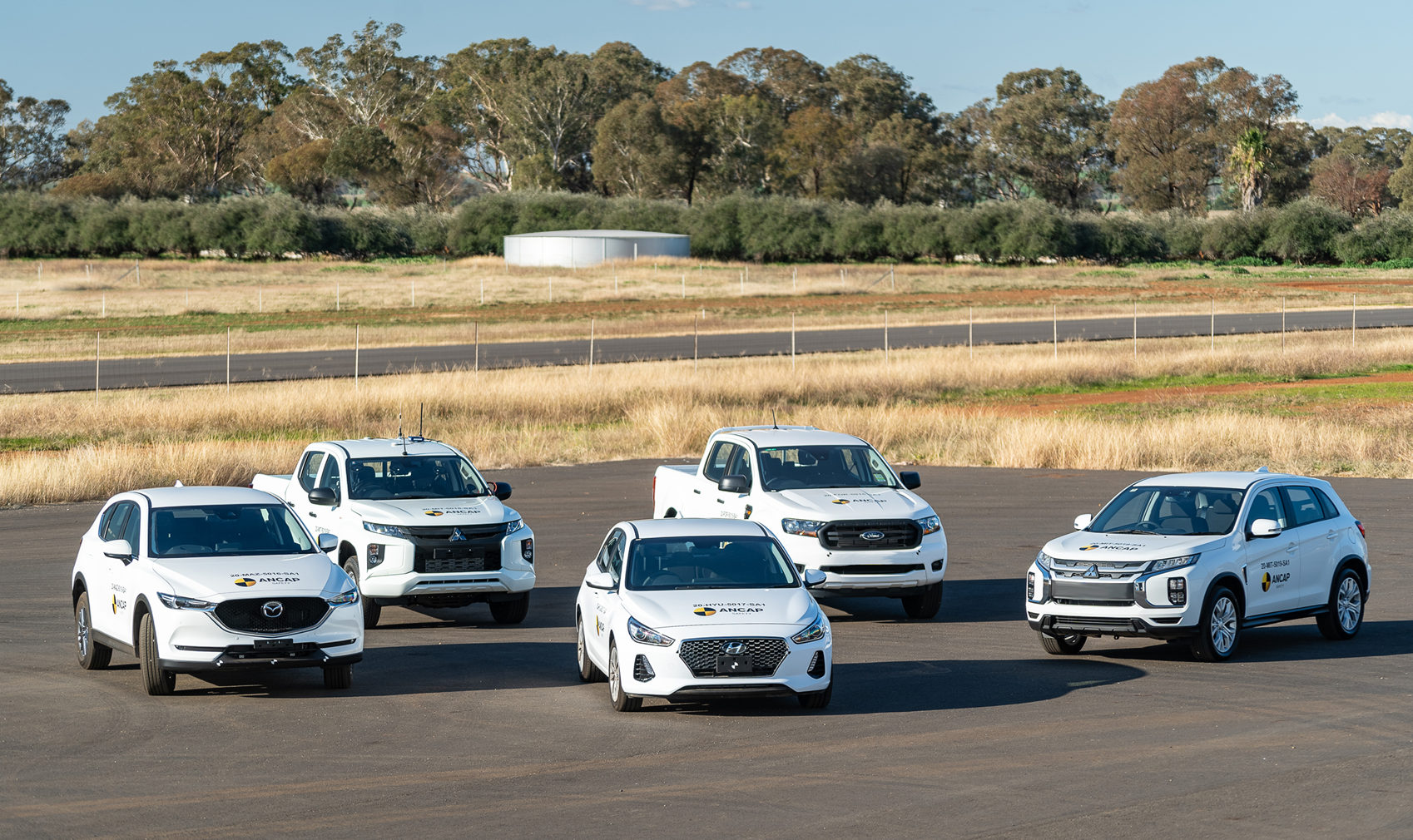ANCAP has announced the results of its first side-by-side comparison of autonomous emergency braking (AEB) technology across Australia’s top 10 selling vehicle models.
Effectiveness testing of AEB technology was introduced as part of ANCAP’s routine safety rating assessment process in January 2018, following the adoption of common test and rating protocols with its European counterpart, Euro NCAP. By the end of 2019, 60 new vehicle models had been assessed against the common criteria, with all offering some form of AEB as standard or an optional extra.
The same range of vehicles offered AEB systems claiming pedestrian detection capability, with the exception of the Jeep Wrangler which ANCAP says currently only offers vehicle-detecting AEB.
According to ANCAP, each of Australia’s top 10 selling vehicle models in 2019, as per the VFACTS sales results compiled by the Federal Chamber of Automotive Industries (FCAI), carry an existing five-star safety rating by the organisation, with five of these models rated against the common 2018-2019 criteria and their ‘AEB Pedestrian’ performance known. The remaining five models – released into the market in earlier years and rated by ANCAP at that time to earlier protocols – pre-date the introduction of AEB performance testing, and so their AEB Pedestrian performance capability was, until now, unknown.
In order to provide Australian consumers with comparable information on the performance of the pedestrian-detecting capabilities of the AEB systems fitted to Australia’s top 10 selling models, ANCAP says it undertook a dedicated series of independent tests to determine their effectiveness across a range of common pedestrian impact scenarios – pedestrians crossing and walking along the road.
“While it’s not possible for ANCAP to re-test each make and model against updated rating criteria each year, to assist consumers we’ve focused on Australia’s most popular selling models to see how they each perform when it comes to avoiding or minimising impacts with some of our most vulnerable road users – pedestrians,” said Rhianne Robson, Director – Communications & Advocacy at ANCAP.
“ANCAP has been encouraging the fitment of AEB systems for many years, and through our influence, vehicle manufacturers have done very well to voluntarily equip their vehicles with AEB technology ahead of regulation.”
ANCAP says the results obtained through the top 10 comparison show a broad difference in effectiveness of AEB systems across models, with five providing what it is calling ‘Advanced’ levels of performance – the Toyota Hilux, Toyota Corolla, Mazda CX-5, Mazda 3 and Toyota RAV4. The performance of systems fitted to the tested models of the Hyundai i30, Mitsubishi Triton and Mitsubishi ASX however were not as effective, in ANCAP’s view, in detecting and avoiding collisions with pedestrians – particularly at night – and provide what it calls ‘Basic’ functionality.
“Technology is improving rapidly, and the differences in performance observed in our testing were to be expected given the staggered introduction of new models and maturation levels of the AEB technology fitted,” said Robson.
“Vehicle safety technology continues to advance at a rapid rate with more sophisticated systems entering the market through new market entrants and model facelifts, and as these vehicles are updated, we expect their performance to improve.
“When purchasing a new or used vehicle, consumers should look for a vehicle equipped with AEB as standard.”
ANCAP says that pedestrian fatalities continue to make up a significant proportion of road deaths, with 138 pedestrians killed in Australia so far this year. The organisation adds that pedestrian-detecting AEB systems have been shown to reduce injury risk by 28 per cent, according to the ‘Potential Benefits of Autonomous Emergency Braking Systems in Australia’ report by the Monash University Accident Research Centre.

